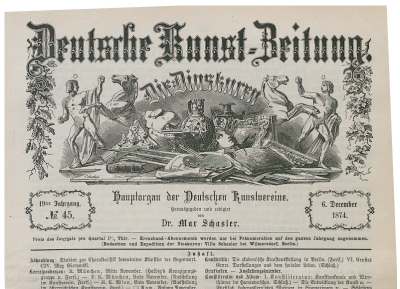Maksymilian Gierymski
Mediathek Sorted
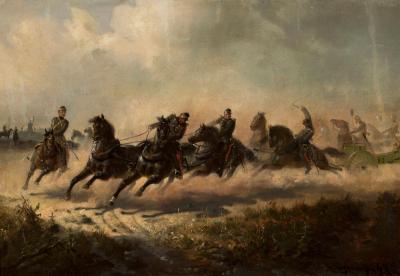
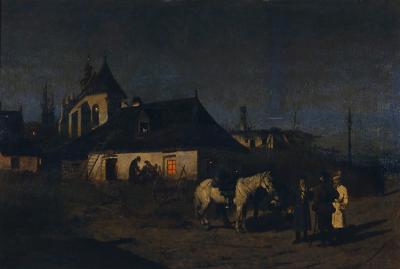
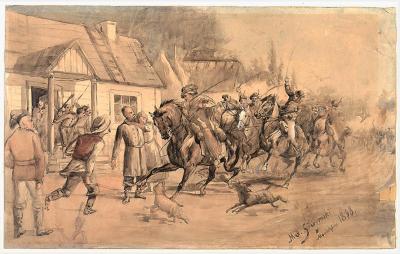
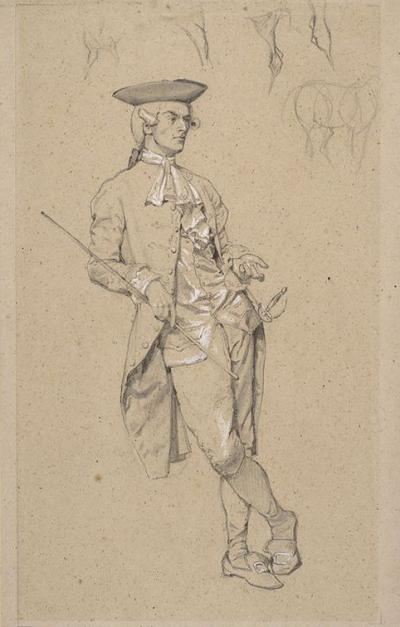
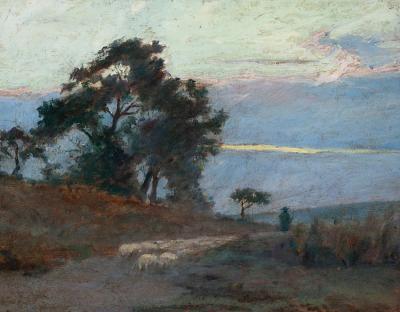
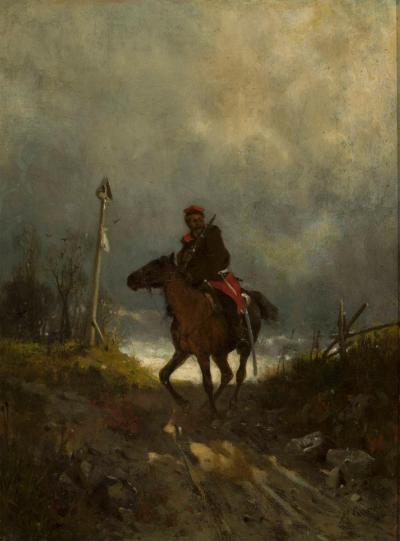
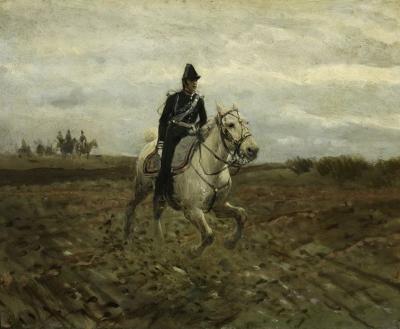

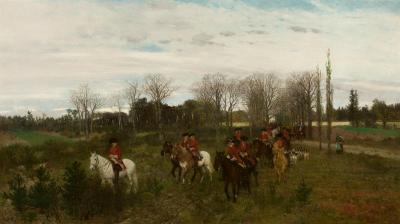
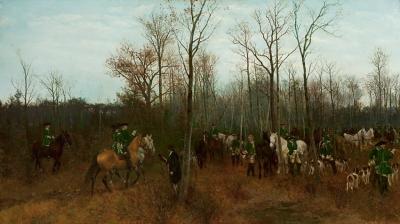
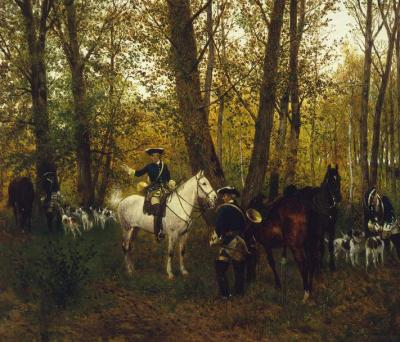
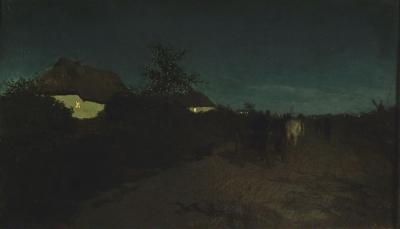
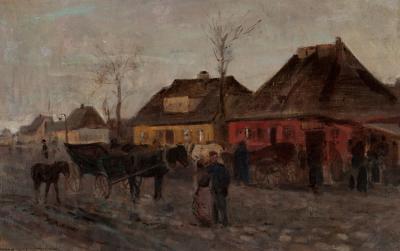
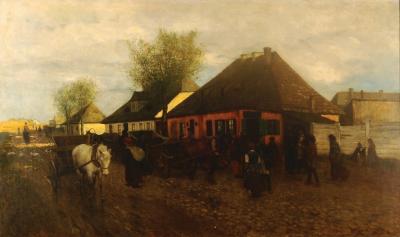
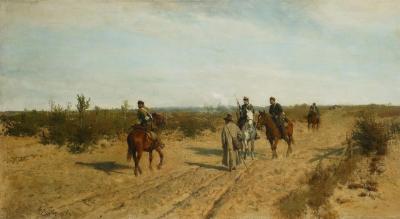
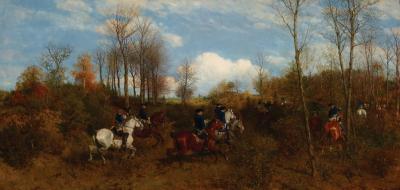

Indeed, the term “Staffage” was used to indicate “vitalizing, frequently symbolic figures of people and animals that can enrich a picture, give it a clear depth and emphasise its significance.” Staffages were generally often much smaller in the 18th and 19th century, and this in no way corresponds to Gierymski’s scenes of horsemen. His motifs were derived from personal experience as can be seen in his paintings of the Polish uprisings in 1830/31 and 1863/64 like the “Cavalry Attack on the Artillery” (Ill. 1), “Insurgents in 1863” (Ill. 6), “Ulan with a Dispatch” (Ill. 7) and “The Insurgents’ Patrol” (Ill. 15). Not least, these motifs were highly popular amongst his Munich audience who regarded them as being both documentary and “exotic”. Józef Brandt had made a name and a fortune for himself with similar subjects. Gierymski’s “pigtail pictures” – hunting scenes in 18th-century costumes – quickly became fashionable because the so-called 18th-century decorative “pigtail style” was considered to be highly modern in the households of the wealthy middle-class who regarded it as “late rococo”.
That said, Gierymski’s historical riding scenes were not merely a nod in the direction of people’s taste. As Aßmus wrote, the thing he most wanted to be was a “painter of history. His ideals were the works of Peter v. Cornelius‘, Alfred Rethels, W. v. Kaulbachs and M. v. Schwinds, which revealed the magnitude of artistic philosophy. He was full of enthusiasm for their works which he attempted to emulate.” Evidence of this leaning is provided by his picture of the inn in Soplicowo (Ill. 3) inspired by the Polish national epic poem “Sir Thaddeus, or the Last Lithuanian Foray” (Pan Tadeusz, czyli Ostatni zajazd na Litwie) by Adam Mickiewicz (1798-1855). On the advice of his teacher Franz Adam he developed a particular interest in the battle paintings of the French artist Ernest Meissonier (1815-1891), a similarity that did not go unnoticed by his contemporaries.
It is also true that Gierymski had a particular preference for nature portraits. Aßmus recalled that he “did not have to look for motifs for his pictures for very long. He mostly dealt with the simplest subjects which would have left hundreds of other artists indifferent. If you were with him in the woods or on a country road […], he would suddenly stop […] and look at a motif that had just appeared. Then his eyes would light up at the site of nature, oh how beautiful, how beautiful, he would call out excitedly with a childlike glee that came directly from his heart.” And later: “Gierymski often used to say that pictures must give viewers the impression that they had just opened the window, looked out at nature and had been surprised by what they saw. ‘Oh that’s just like nature!’ He thought that his most important task was to provide a faithful portrayal of nature, and in so far G was a realist.”






















































































